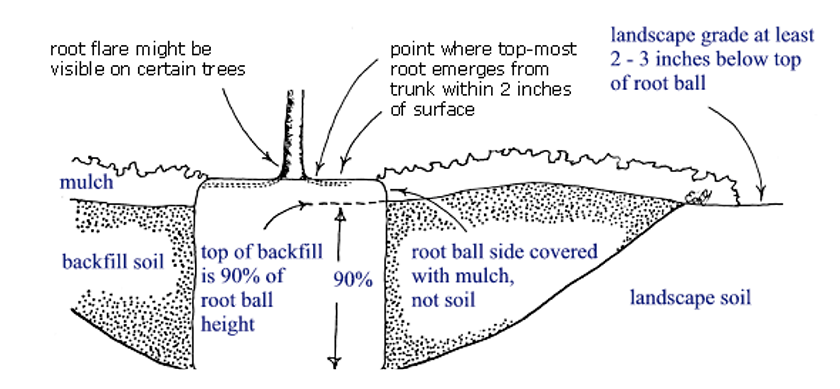Planting Instructions
Before digging the hole:
1) Find the point where the top-most root emerges from the trunk (dig down next to the trunk to find this point), and
2) Measure the distance between the top-most root and the bottom of the root ball. Dig the hole slightly shallower than this depth and as wide as possible, (1.5X minimum).Do not dig the hole deeper than the root ball.
3) When planting in rock or very compacted soil break up the substrate to allow roots to anchor into the landscape.

Extracted from Planting – Landscape plants – Edward F. Gilman – UF/IFAS
http://hort.ufl.edu/woody/plantinghole.html
Four of the most common causes of poor plant establishment are:
1) Planting too deeply
2) Under watering
3) Over watering
4) Over-mulching.
Watering:
Time of year, soil type and rainfall dictate how often and how much water should be applied. Plants from the nursery, for the most part, are accustomed to water every day and will initially expect the same in the landscape. Water from the sprinkler system alone is not enough, it merely gets the plant wet and cannot drink through it’s leaves.
During late winter and early spring water 3X per week. Fill the basin with water once letting water seep in, then fill again if necessary. Water twice weekly thereafter until established. During hot summer months, water daily. During heavy periods of rain, do not water.
Pay special attention to crape myrtles, bottlebrush, oaks and elms as, they tend to dry out quickly. If unsure that your plant is getting adequate water, dig down 4-5 inches, you should find lightly moist soil